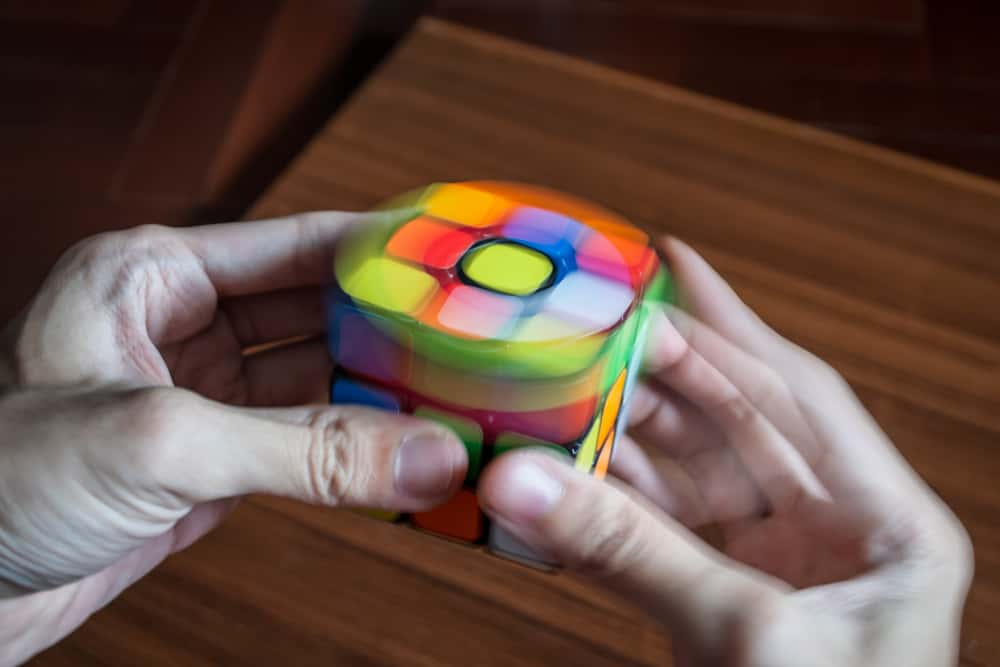When Hungarian professor Erno Rubik made his first 3x3 cube in 1974, he didn’t realize he was making a toy that would take the world by storm. He didn’t even realize he’d made a puzzle. But then, after fiddling around with the device and scrambling it up, he quickly realized he couldn’t get it back to how it started.
As Rubik put it, “It was a code I myself had invented, yet I could not read it.” And, unfortunately for him, Rubik couldn’t simply google “How to solve a Rubik’s Cube?” as most people do today.
The First Solve
He couldn't have possibly known, but the cube he’d invented contained 43,000,000,000, 000,000,000 combinations. His seemingly simple invention was deceivingly complex and solving it was no simple task.
But Rubik was persistent, and after a month of wracking his brain, he finally returned his puzzle to its original state. It took a lot of trial and error, but he eventually used a method of rearranging each side’s corners first—one that would seem quite primitive to today’s Cubers—but he succeeded.
The Magic Cube
Realizing he was onto something, Rubik patented his Magic Cube in 1975 and it began to sell like gangbusters in his hometown of Budapest, but it would be four years until it became a worldwide sensation. At the time, Hungary was behind the Iron Curtain, and distributing products worldwide was far from simple.
In 1980, Rubik’s invention finally made it into peoples’ hands all over the world. Around the same time, the Magic Cube was renamed the Rubik’s Cube to credit its inventor.
How to Solve a Rubik's Cube
The same year the Rubik’s Cube was released worldwide, David Singmaster published the first method for solving it. His layer-by-layer strategy was easy enough to grasp, and it’s still commonly used to teach beginners today.
Singmaster introduced “algorithms” to cube solving. An algorithm is a memorized sequence of different moves that will have a specific effect on the cube’s position. All cubing methods the people use today require you to memorize a series of algorithms and to execute them in a specific order. Algorithms are how you solve a Rubik’s Cube—but there’s more than one way to skin a cat, so they say.
How to Solve a Rubik's Cube...Fast
Speedcubing contests followed in the wake of Rubik’s success, and people began to develop new ways to solve the cubes faster and faster. In 1982, an American teenager named Minh Thai won a contest by solving a cube in just 22.95. Thai eventually wrote a book called The Winning Solution which detailed his corners-first method. But today, people solve Rubik's Cubes a lot faster than that—and to do so, they needed a different strategy.
Then, in 1997, Jessica Friedrich developed a new speedcubing method and published it online. Her method, commonly called CFOP, is the gold standard for solving a Rubik’s Cube as fast as possible. The current world record for solving a cube, a blistering 3.47 seconds, was done with Friedrich’s method.
Follow The Steps
But while Friedrich’s method is the fastest, it is extremely complex, and not recommended for beginners. The layer by layer method first published by Singmaster is easier to grasp on your first time around, but detailed instructions for both are available online. The algorithms seem daunting at first, but with some persistence, anyone can solve a Rubik’s Cube.
Or, if you're really stubborn, you could try solving your Rubik's Cube like Erno Rubik first did in 1974, with no information to help you. It only took him a month, maybe you can do better? After all, there are only 43 quintillion ways it could go wrong.















